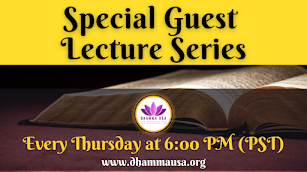Summary
In Buddhist ethics, the precepts play a crucial role but are not sufficient for a fully moral life. The precepts are rules that outline prohibited actions, but true morality also requires the right intentions and motivations behind following these rules. The virtues complement the precepts and are seen as the essence of moral character, representing the internalization of ethical values rather than mere adherence to external rules. Virtues are essential for moral conduct to become a natural and spontaneous expression of one's inner beliefs.
Early Buddhist texts emphasize cultivating correct dispositions and habits so that moral actions arise from a deep understanding and internalization of values, rather than just rule-following. For example, the First Precept against killing should stem from genuine compassion and an understanding of interconnectedness rather than mere compliance. This process of aligning one's inner character with the precepts is believed to bring practitioners closer to enlightenment.
Buddhist virtues, particularly the three cardinal virtues of non-attachment (araga), benevolence (adosa), and understanding (amoha), are essential for counteracting negative dispositions like greed, hatred, and delusion. Non-attachment addresses selfish desires, benevolence promotes goodwill towards all beings, and understanding reflects knowledge of human nature and the Four Noble Truths.
The principle of ahimsa, or the inviolability of life, is central to Buddhist ethics. Both Buddhism and Jainism, emerging from renouncer traditions, rejected animal sacrifice and advocated for the sanctity of life. While extreme measures were sometimes taken to avoid harming even the smallest forms of life, such as using strainers or avoiding certain agricultural practices, Buddhism generally views intentional harm or negligence towards life as morally wrong, but does not consider unintentional harm in agriculture as severe.
Critical Analysis
The emphasis on virtues alongside precepts highlights a nuanced approach to Buddhist morality, recognizing that ethical behavior must be rooted in internal motivations and character development rather than mere compliance with rules. This dual perspective acknowledges that true morality involves both external adherence to ethical guidelines and the internal cultivation of virtues.
The notion that precepts are effectively a list of actions a virtuous person will avoid underscores the importance of moral character in Buddhism. This view aligns with the idea that ethical behavior should naturally emerge from internalized virtues, promoting a more integrated and genuine form of morality. However, this approach could be critiqued for its idealism; the expectation that all practitioners will effortlessly align their actions with virtues may overlook the complexities and gradual nature of moral development.
The focus on the three cardinal virtues—non-attachment, benevolence, and understanding—provides a clear framework for addressing the roots of ethical behavior. These virtues counteract fundamental negative dispositions, offering a constructive approach to moral growth. Nevertheless, the application of these virtues in practice might be challenging, as they require deep personal transformation and a profound understanding of Buddhist teachings.
The principle of ahimsa reflects a significant ethical stance within Buddhism, emphasizing the sanctity of life and the rejection of harm. While the historical context shows an evolution from ritual sacrifice to symbolic offerings, the extreme measures taken by some Buddhist and Jain traditions reveal a tension between ideal ethical standards and practical living. Buddhism's more moderate stance—viewing intentional harm as morally wrong while accepting the inevitability of some harm in practices like agriculture—illustrates a pragmatic approach to ethical dilemmas. This balance allows for a more adaptable and realistic application of Buddhist principles in everyday life.
In summary, the integration of virtues with precepts in Buddhist morality presents a holistic view that values both ethical conduct and the internalization of moral values. While this approach promotes a deep and genuine form of morality, its practical application and the balance between idealism and real-world constraints remain critical areas for reflection.






























0 comments:
Post a Comment
Your comments and feedback are very helpful to us in improving our posts. We really appreciate your time. Thank you!
Dhamma USA Team.